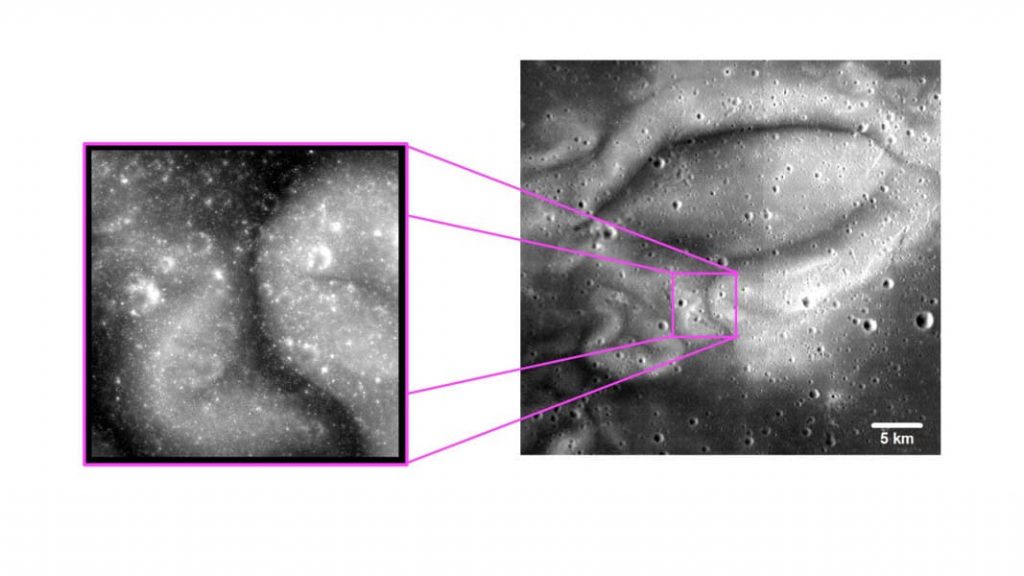TREX members Deborah Domingue and Roger Clark recently co-authored a paper “Photometric Properties Within Reiner Gamma Swirl – Constraining Formation Mechanisms” that appears in The Planetary Science Journal that explores the differences between the bright and dark patches in lunar swirls and goes beyond the albedo variations to include differences in the structure of the lunar soils and the grains within those soils.

The image on the right displays the center “eye” region of the Reiner Gamma swirl. Reiner Gamma swirl study area (left) is centered at 7.11ºN and 301.18ºE.
Credit: LROC Quickmap (https://quickmap.lroc.asu.edu).
The paper finds that the intrinsic brightness is different, which is no surprise as differences in brightness is what defines these features. However, the source of the brightness differences can vary, and this is explored in the paper, Domingue said. Brightness variations can be due to differences in composition (what the regolith is made of), porosity (how compact the surface is), and the size of the grains comprising the regolith. This study indicates that these brightness changes are dominated by compositional differences and not differences in compaction. However, differences in the size of the regolith grains could still be a contributing factor.
Read the full press release Ground Conditions Can Impact Lunar Swirls – Planetary Science Institute (psi.edu).
